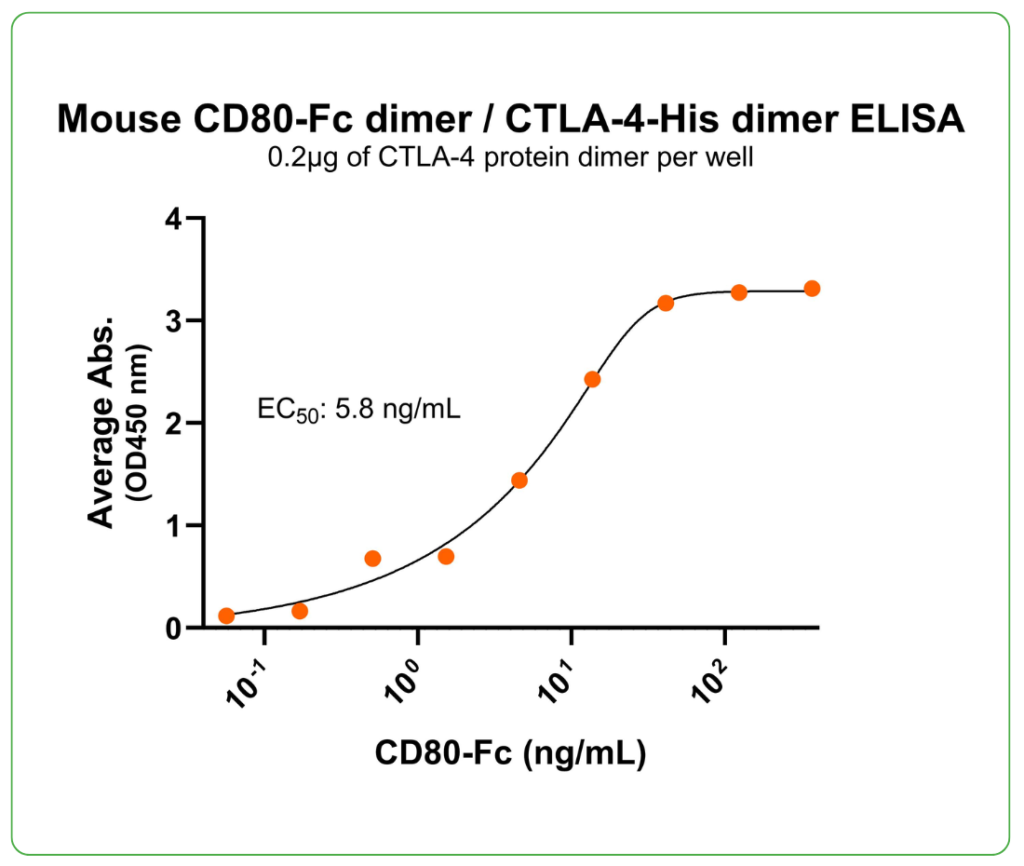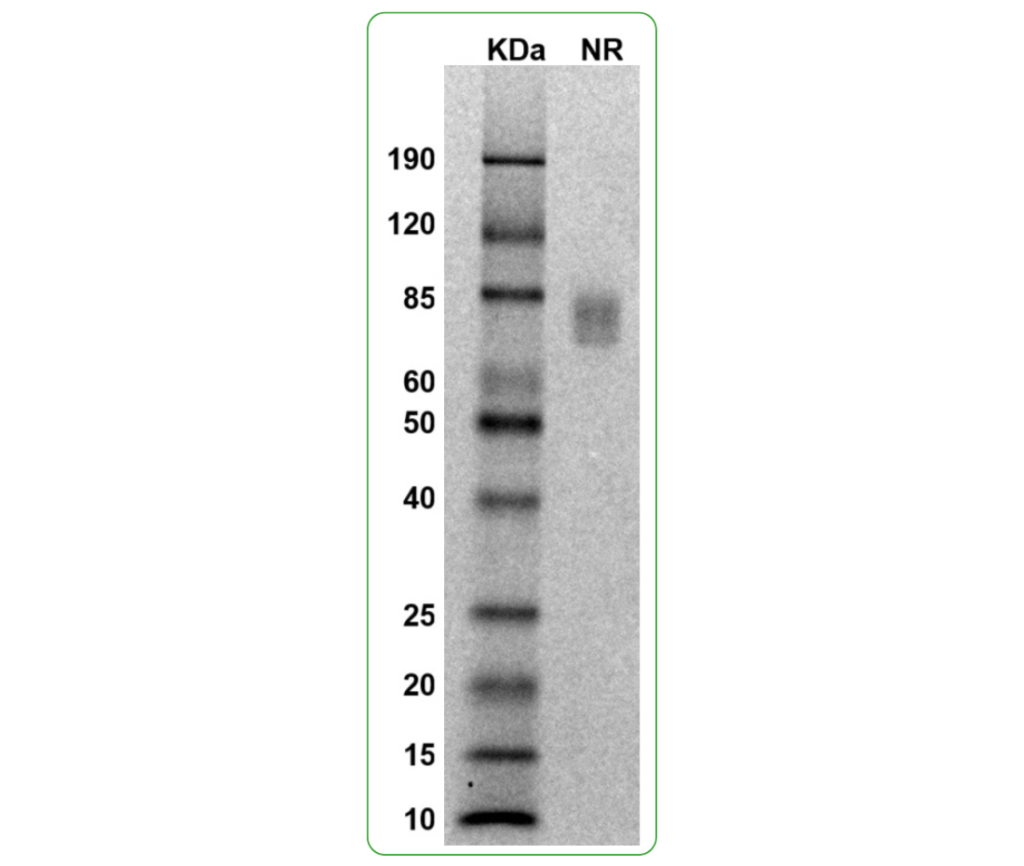Bioactive, Recombinant Mouse CTLA-4 Protein Dimer, His Tag
| Product Code | CSP-25185-01 |
| Expression Host | HEK293T |
| Verified Applications | SPR for CTLA-4-specific antibody and CD80 ligand protein binding assays. ELISA for CTLA-4 and CD80 ligand protein binding assays. |
| Suggested Applications | BLI for CTLA-4-specific antibody and CD80 protein binding assays. Animal immunization, RUO. |
| Purity | Greater than 90% dimer form as determined by SDS-PAGE under non-reducing condition |
| Amino Acid Range | E36-D161 |
For Research Use Only (RUO)
Price: $125.00
Price: $195.00
Price: $350.00
Price: $750.00
Price: $2,500.00
Bioactivity – Ligand Binding
Immobilized mouse CTLA-4 protein dimer, His Tag (CSP-25185-01) at 2 μg/mL (100 μL/well) can bind mouse CD80 protein dimer, Fc Tag (Cat. No. CSP-25187-04), with half maximal effective concentration (EC50) range of 2.9-11.7 ng/mL (QC tested).
SDS-PAGE
Specifications
Formulation: 0.22μm filtered PBS, pH 7.4
Shipping: Frozen Dry Ice
Storage: -80°C
Cytotoxic T-lymphocyte associated protein 4 (CTLA-4), is also known as CD152 (cluster of differentiation 152), CTLA4, ALPS5, CD, CD152, CELIAC3, GRD4, GSE, and IDDM12. CTLA-4 is a protein dimer (CSP- 25185-01) and contains a CTLA-4 extracellular domain (UniProt# P09793, amino acids Glu36-Asp161) fused with a proprietary cis-dimer motif followed by a His tag at the C-terminus. This dimeric protein is expressed in HEK293T cells. The CTLA-4 protein dimer is bioactive and can enhance the binding to CD80. It also binds CTLA-4-specific antibodies. This CTLA-4 protein dimer can be used as an antigen for in vitro assays and antibody screening, and as an immunogen for immunization to generate antibodies targeting more conformational epitopes.
Protein Name: CTLA-4
UniProt #: P09793
Predicted Molecular Weight: 44 kDa
SDS PAGE Molecular Weight: The migration range of the dimer protein with glycosylation under non-reducing condition is 60-85 kDa on SDS PAGE.
Protein Construct: CTLA-4 protein dimer contains a CTLA-4 extracellular domain (UniProt# P09793) fused with a proprietary cis-dimer motif followed by a His tag at the C-terminus.
Background
Cytotoxic T-lymphocyte associated protein 4 (CTLA-4), also known as CD152 (cluster of differentiation 152), CTLA4, ALPS5, CD, CELIAC3, GRD4, GSE, and IDDM12 is a member of the immunoglobulin superfamily. CTLA-4 contains extracellular immunoglobulin-like (Ig-like) domains (an Ig-V-like and an Ig-C-like domain), a transmembrane domain, and a cytoplasmic tail. As an immune checkpoint CTLA-4 binds both CD80 (Cluster of differentiation 80) and CD86 (Cluster of differentiation 86) to transmit an inhibitory signal with T cells, competing with CD28 (Cluster of differentiation 28) which transmits a stimulatory signal. It is often overexpressed in human malignancies caused by immunosurveillance, making the inhibition of immune checkpoint proteins like CTLA-4 an emerging strategy in cancer therapy. CTLA-4 gene variants have been associated with Type 1 diabetes, Graves’ disease, Hashimoto’s thyroiditis, celiac disease, and other autoimmune diseases. While structurally and functionally similar to human CTLA-4, mouse CTLA-4 is a species-specific tool essential for preclinical studies, basic research and translational research in cancer immunotherapy.
Alternate Names: CTLA-4, CD152, CTLA4, ALPS5, CD, CD152, CELIAC3, GRD4, GSE, and IDDM12


